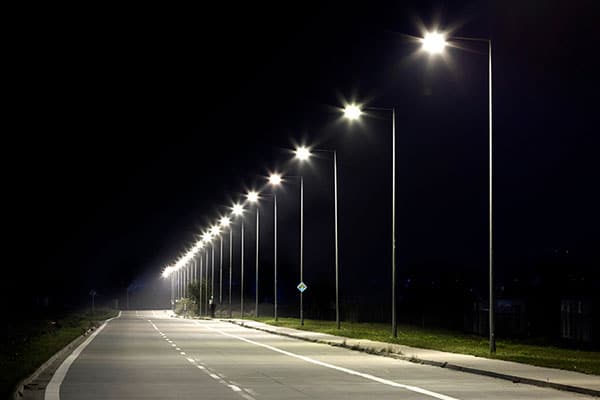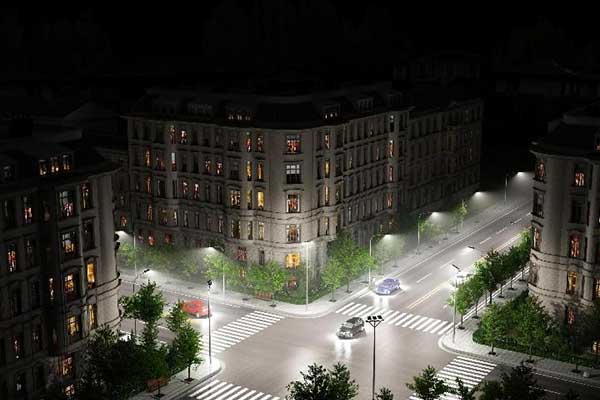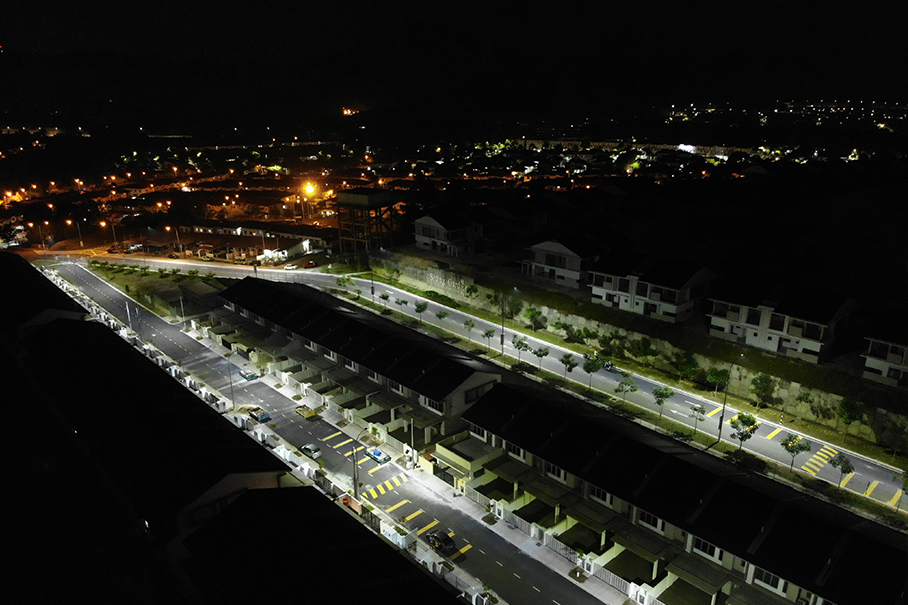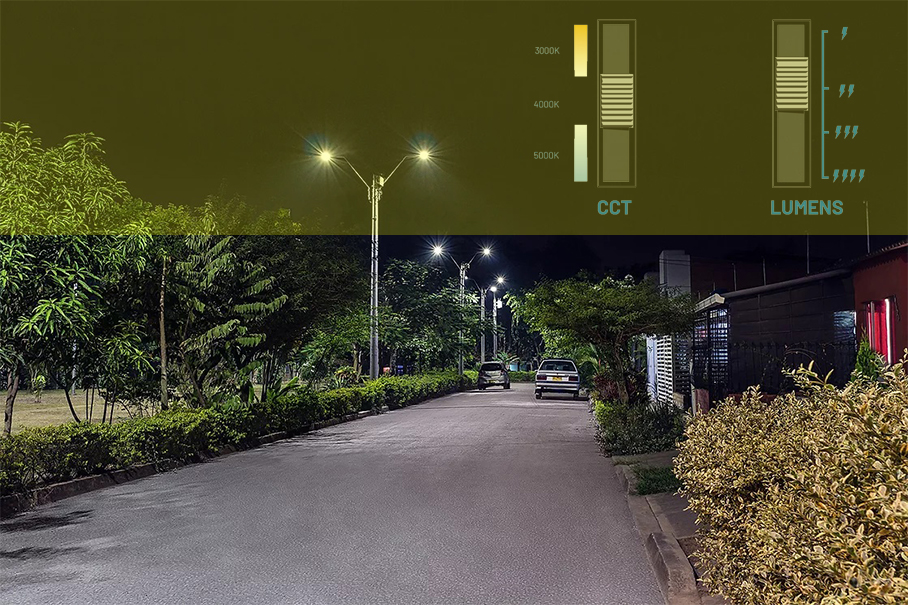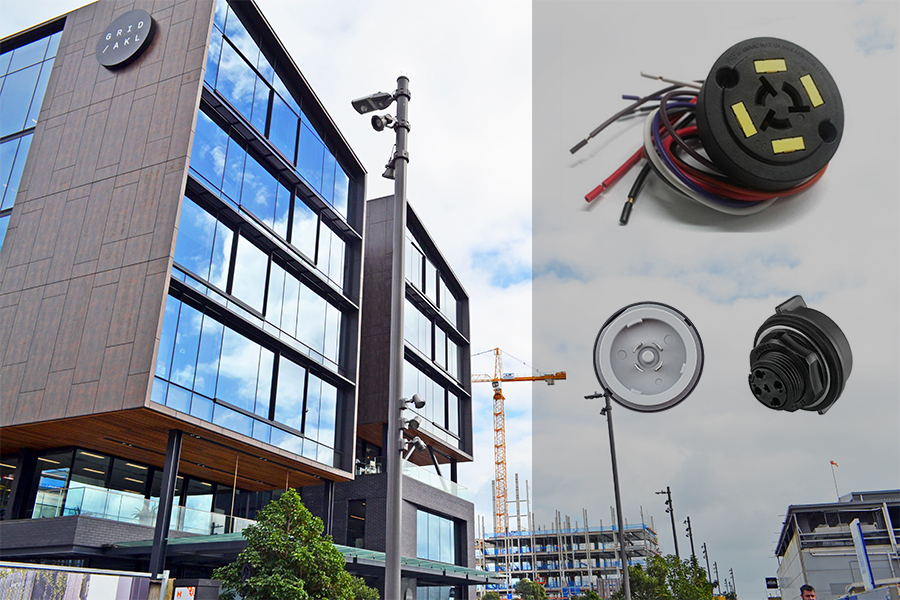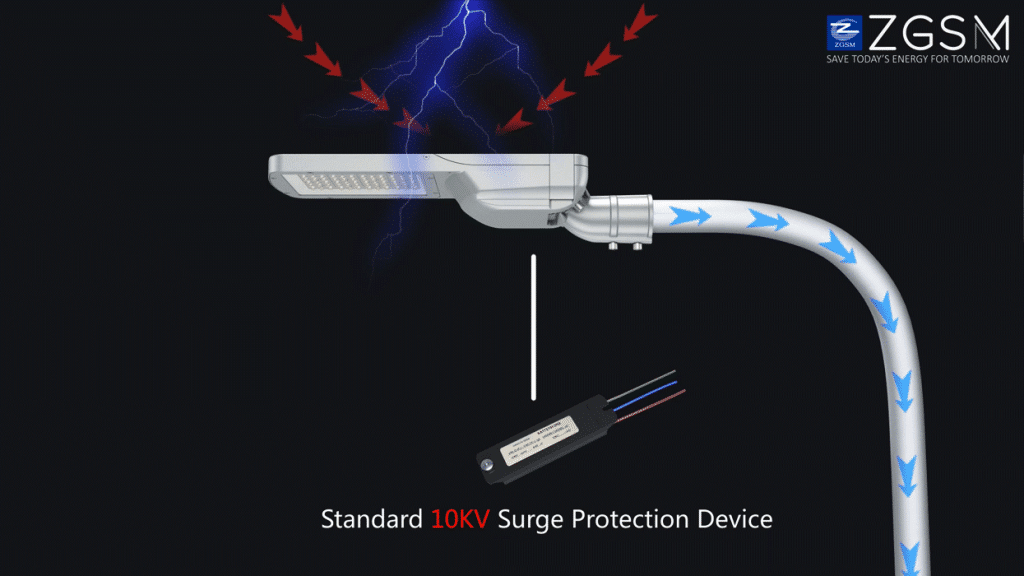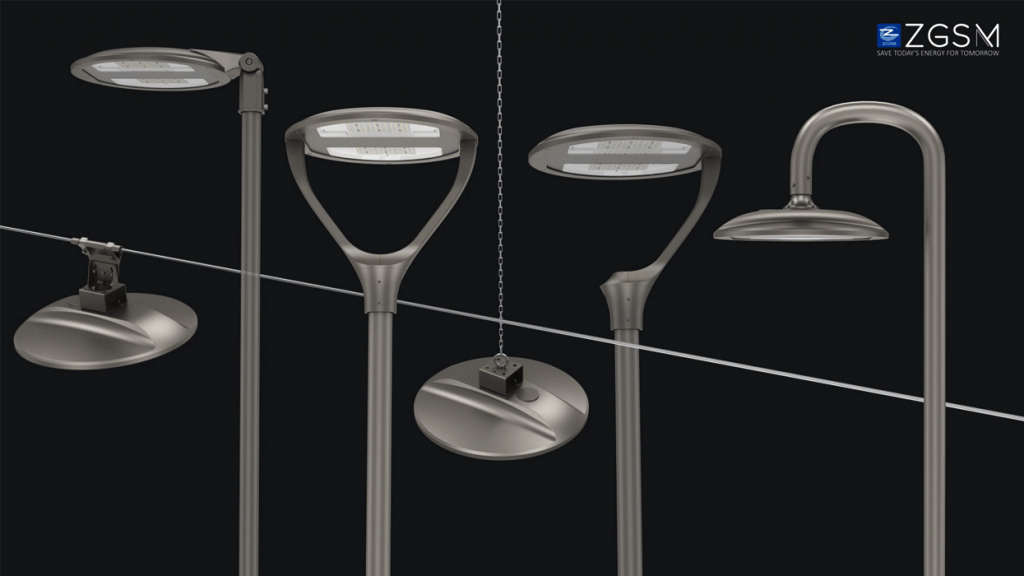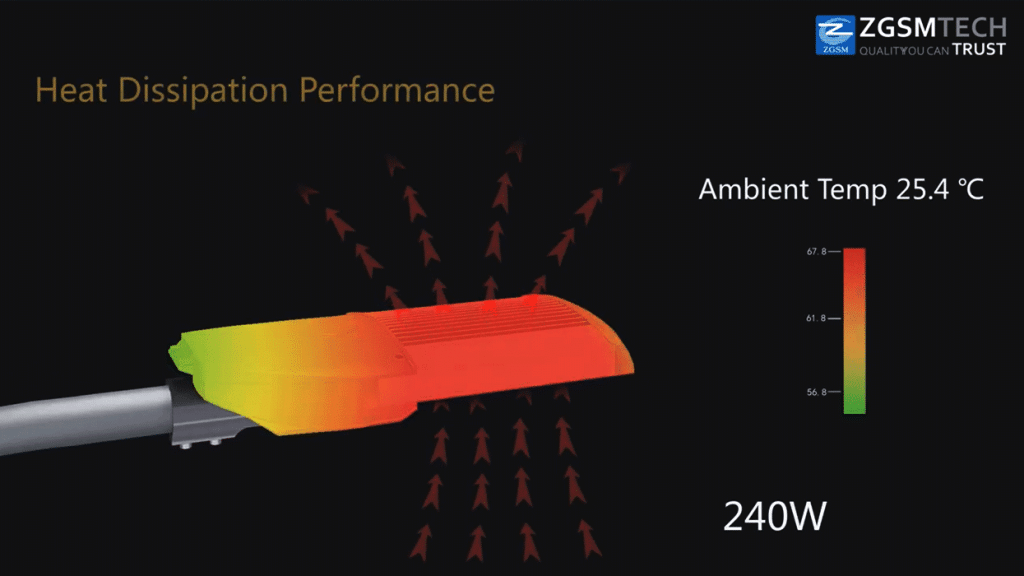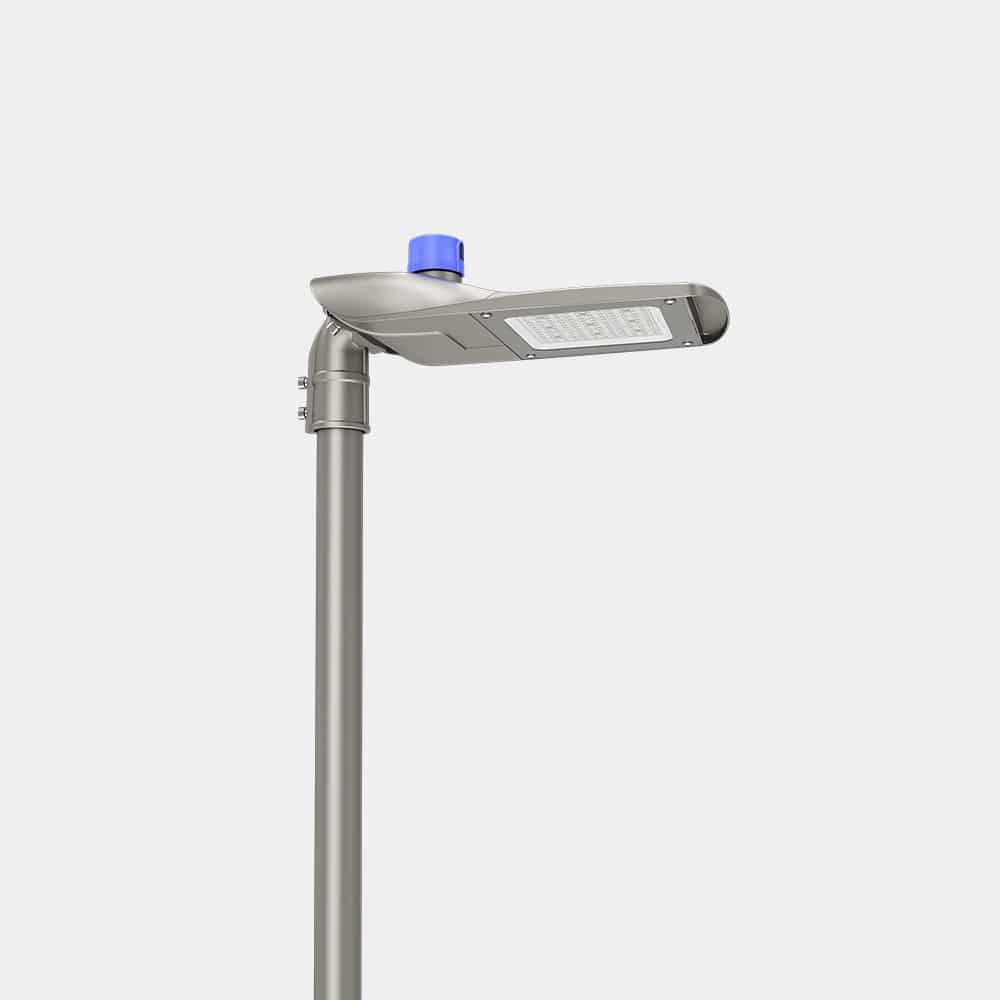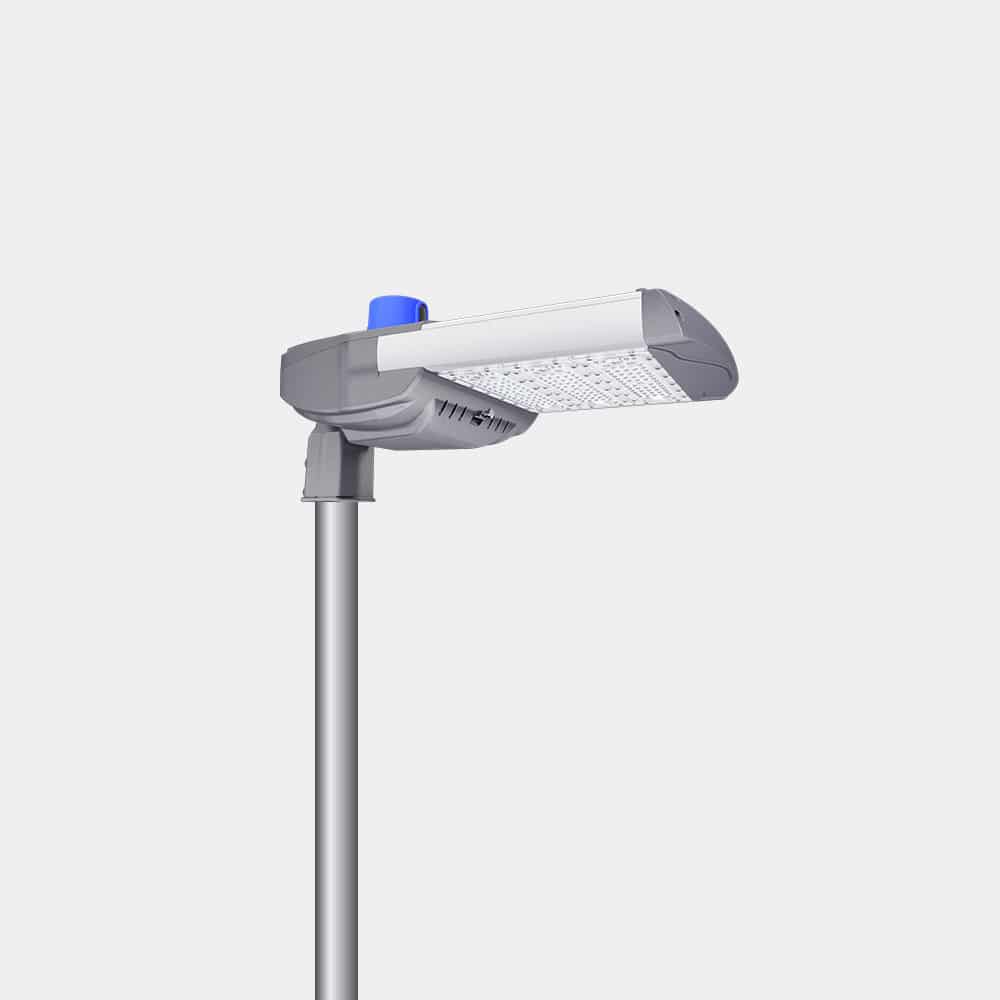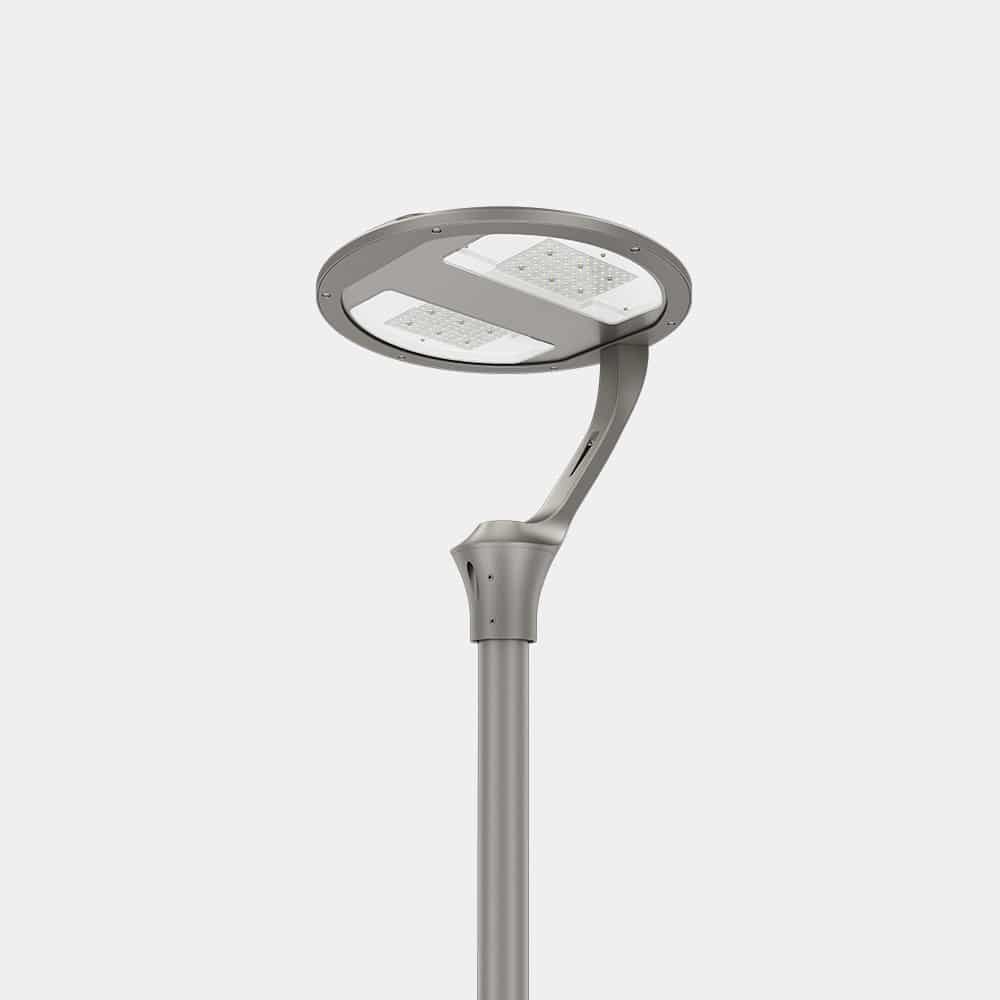NTC thermistor function and its application in LED lamps

Anna
Introduction
Compared with the traditional light source, LED light source is a solid cold light source with long life, high luminous efficacy, no radiation, low power consumption, good shock and vibration resistance, high reliability and other characteristics. In the global promotion of green lighting today, LED as a new green lighting light source is sought after by the world. However, in the rapid development of LED at the same time, how to further improve the life of LED and reliability is indeed an urgent matter.
The relationship between temperature and LED operation
Temperature has an important effect on the work of LED.
1. Luminous Efficiency: Elevated temperature will lead to a decrease in the luminous efficiency of LEDs. the luminous efficiency of LEDs refers to the light output power produced per unit of electrical power, usually measured in lumens per watt (lm/W). When the temperature of the LED increases, the compound efficiency of electrons and holes will be reduced, resulting in a decrease in luminous efficiency.
2. Lifetime: Temperature is one of the main factors affecting the lifetime of LEDs. High temperatures cause aging and degradation of the materials inside the LED, accelerating the decay process of the device. This may lead to a reduction in light output, color shift, and even device failure. Therefore, controlling the operating temperature of the LED is the key to ensure its life and stable performance.
In order to ensure the normal operation of LED and prolong its life, the following measures are usually taken:
1. Heat dissipation design: Through heat sinks, fans or other heat dissipation devices, the heat of the LED is effectively conducted and emitted to keep the working temperature of the LED within a reasonable range.
2. Current control: control the working current of LED to avoid overheating caused by too high current. Appropriate current control can improve the luminous efficiency and life of LED.
3. Ambient temperature control: When installing LEDs, the effect of ambient temperature on LEDs needs to be considered. Avoid exposing LEDs to high temperatures, or take appropriate heat dissipation measures to reduce the ambient temperature.
In short, temperature is an important parameter that needs to be paid attention to and controlled in the work of LEDs, which has a significant impact on the luminous efficacy, spectrum and lifetime of LEDs.
What is NTC Thermistor and how does it relate to temperature?
NTC stands for Negative Temperature Coefficient, which is a kind of thermistor. NTC thermistor function is that its resistance value decreases with the increase of temperature, this means that when the temperature increases, the resistance value of the NTC will decrease; when the temperature decreases, the resistance value of the NTC will increase.
All resistors have a temperature dependence, given by the temperature coefficient. For most resistors (fixed and variable), this temperature coefficient is kept very low, such that changes in temperature do not significantly affect their resistance. Thermistors, however, have a fairly high temperature coefficient, so that their resistance varies according to temperature.
NTC are usually made of oxide materials such as nickel oxide and zinc oxide. They have high sensitivity and stability and are widely used in temperature measurement and temperature compensation.
Why does the resistance value of NTC decrease with the increase of temperature. This is because in NTC materials, as the temperature increases, the concentration of electrons and holes in the conductive material increases, resulting in a decrease in resistance.
Connect the NTC to key parts in the circuit, such as the LED drive circuit. When the temperature increases, the resistance value of the NTC decreases, causing the current and power in the circuit to decrease. This reduced current and power serves to protect circuits and components from overheating and damage.
The specific circuit diagram can vary according to specific application and design requirements. Generally speaking, the NTC is connected at a key position of the circuit, such as the input or output of the LED driving circuit. Connecting NTC at the input can realize temperature monitoring and temperature compensation to ensure the stability and safety of the circuit. Connecting NTC at the output can realize temperature protection. When the temperature exceeds the set value, the resistance value of NTC will drop, reducing the current and power, thus protecting LED and other components from overheating.
The following is the circuit diagram of the street lamp with NTC:
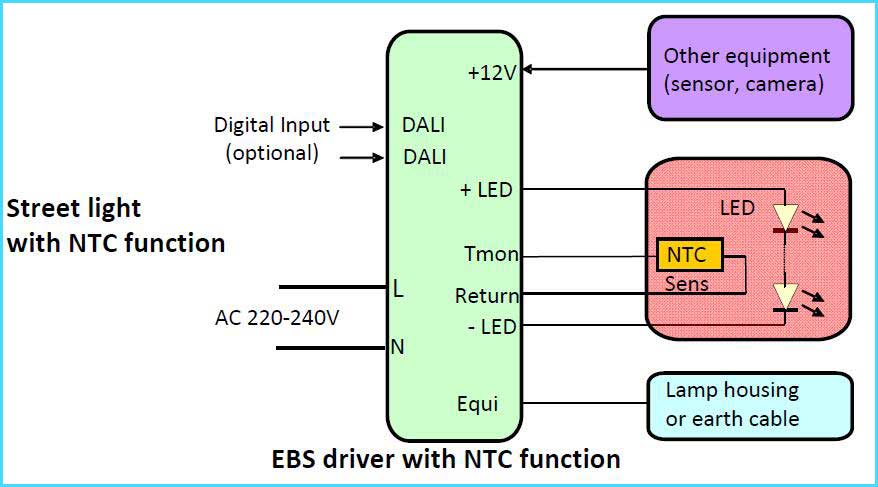
Characterization Curves – Typical NTC thermistors provide the most accurate readings over the -55℃ to 200℃ temperature range. However, some specially designed NTC thermistors are used at absolute zero temperature (-273.15℃) and some can be used up to 150℃ above.
The figure below shows the characteristic curve of an NTC thermistor:
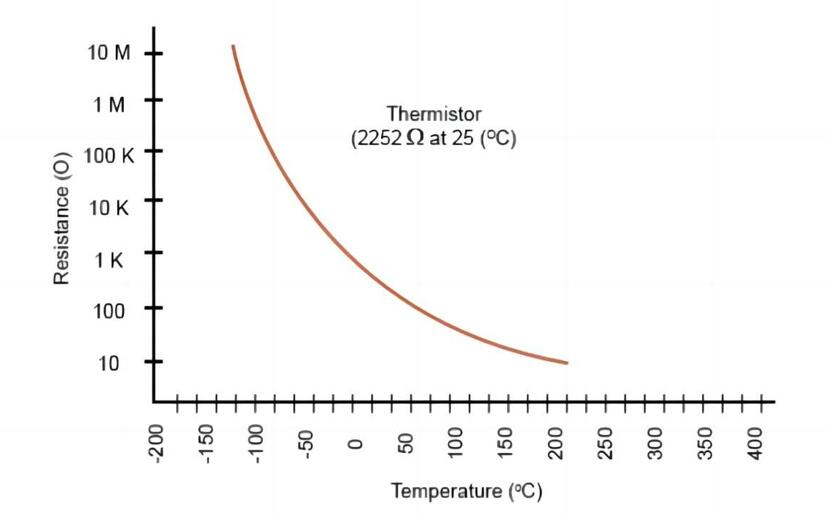
From the figure we can see that they have a steep resistance temperature curve, indicating good temperature sensitivity.
In temperature measurement, NTC thermistor can be used as temperature sensor. By measuring the change in NTC resistance, the change in temperature can be deduced. The resistance-temperature characteristics of NTC thermistors can be accurately measured by methods such as calibration and look-up tables.
In addition, NTC thermistors can also be used for temperature compensation. In some circuits, the performance of electronic components may be affected by temperature. By connecting the NTC thermistor with other electronic components, the work of the circuit can be adjusted according to the change of the NTC resistance value to achieve temperature compensation.
The NTC thermistor temperature sensor RT relationship table is commonly referred to as the table that represents the different resistance values of the NTC at various temperatures. The accurate parameters of this table are crucial in software development.
A typical RT meter includes the following key parameters:
1. Nominal resistance value
2. B value
3. Tolerance resistance value within the ± range.
Please refer to the table below for specific parameters.
Nominal resistance value: 10kΩ @25℃
Tolerance accuracy: + / – 1%
B value: 3950K @25/50℃
B value accuracy: + / – 1%
| Temp. | Rmax | Rnor | Rmin |
| (deg. C) | (k Ohms) | (k Ohms) | (k Ohms) |
| 0 | 33.3321 | 32.6142 | 31.9086 |
| 1 | 31.6628 | 30.9966 | 30.3415 |
| 2 | 30.0869 | 29.4688 | 28.8605 |
| 3 | 28.5986 | 28.0251 | 27.4604 |
| 4 | 27.1925 | 26.6606 | 26.1364 |
| 5 | 25.8638 | 25.3704 | 24.8839 |
| 6 | 24.6076 | 24.1501 | 23.6987 |
| 7 | 23.4197 | 22.9955 | 22.5768 |
| 8 | 22.2959 | 21.9028 | 21.5144 |
| 9 | 21.2325 | 20.8682 | 20.5081 |
| 10 | 20.2259 | 19.8884 | 19.5546 |
| 11 | 19.2727 | 18.9602 | 18.6509 |
| 12 | 18.3699 | 18.0806 | 17.7941 |
| 13 | 17.5144 | 17.2467 | 16.9815 |
| 14 | 16.7036 | 16.4561 | 16.2106 |
| 15 | 15.9349 | 15.7061 | 15.479 |
| 16 | 15.2059 | 14.9945 | 14.7845 |
| 17 | 14.5143 | 14.3191 | 14.1251 |
| 18 | 13.858 | 13.6779 | 13.4988 |
| 19 | 13.235 | 13.069 | 12.9037 |
| 20 | 12.6435 | 12.4905 | 12.3381 |
| 21 | 12.0817 | 11.9409 | 11.8005 |
| 22 | 11.5479 | 11.4184 | 11.2893 |
| 23 | 11.0407 | 10.9217 | 10.803 |
| 24 | 10.5585 | 10.4494 | 10.3403 |
| 25 | 10.1 | 10 | 9.9 |
| 26 | 9.6724 | 9.5724 | 9.4725 |
| 27 | 9.2651 | 9.1654 | 9.0659 |
| 28 | 8.8773 | 8.7779 | 8.6788 |
| 29 | 8.5078 | 8.4089 | 8.3104 |
| 30 | 8.1556 | 8.0574 | 7.9597 |
| 31 | 7.8199 | 7.7225 | 7.6256 |
| 32 | 7.4999 | 7.4033 | 7.3073 |
| 33 | 7.1946 | 7.099 | 7.004 |
| 34 | 6.9034 | 6.8088 | 6.7149 |
| 35 | 6.6255 | 6.5321 | 6.4393 |
| 36 | 6.3603 | 6.268 | 6.1764 |
| 37 | 6.1071 | 6.016 | 5.9257 |
| 38 | 5.8654 | 5.7755 | 5.6865 |
| 39 | 5.6344 | 5.5459 | 5.4581 |
| 40 | 5.4138 | 5.3266 | 5.2402 |
| 41 | 5.203 | 5.1171 | 5.0321 |
| 42 | 5.0015 | 4.9169 | 4.8333 |
| 43 | 4.8088 | 4.7257 | 4.6435 |
| 44 | 4.6246 | 4.5428 | 4.462 |
| 45 | 4.4484 | 4.368 | 4.2886 |
| 46 | 4.2798 | 4.2008 | 4.1229 |
| 47 | 4.1184 | 4.0409 | 3.9644 |
| 48 | 3.964 | 3.8878 | 3.8128 |
| 49 | 3.8162 | 3.7414 | 3.6678 |
| 50 | 3.6746 | 3.6012 | 3.529 |
Why LED lamps should be installed with NTC?
There are several main reasons for installing NTC thermistor function in LED luminaires:
1. Temperature monitoring: LED lamps will generate a certain amount of heat during operation, and the performance and life of LEDs are affected by temperature. By installing NTC, the temperature of the LED lamp can be monitored in real time to ensure that the LED works within a safe temperature range. If the temperature exceeds the set threshold, corresponding measures can be taken, such as reducing the current or improving heat dissipation, to avoid overheating the LED.
2. Temperature compensation: The light effect and color temperature of LED will change with the change of temperature. By installing NTC, the temperature of the LED lamp can be measured in real time, and corresponding adjustments can be made according to the temperature change to keep the light effect and color of the LED stable. This can improve the light quality and consistency of LED fixtures.
3. Fault protection: LED lamps may overheat under fault or abnormal conditions. The installation of NTC can be used as a fail-safe device. When the temperature exceeds a safe threshold, the NTC can trigger a protection mechanism, such as a power failure or an alarm, to prevent damage to the luminaire or cause safety problems.
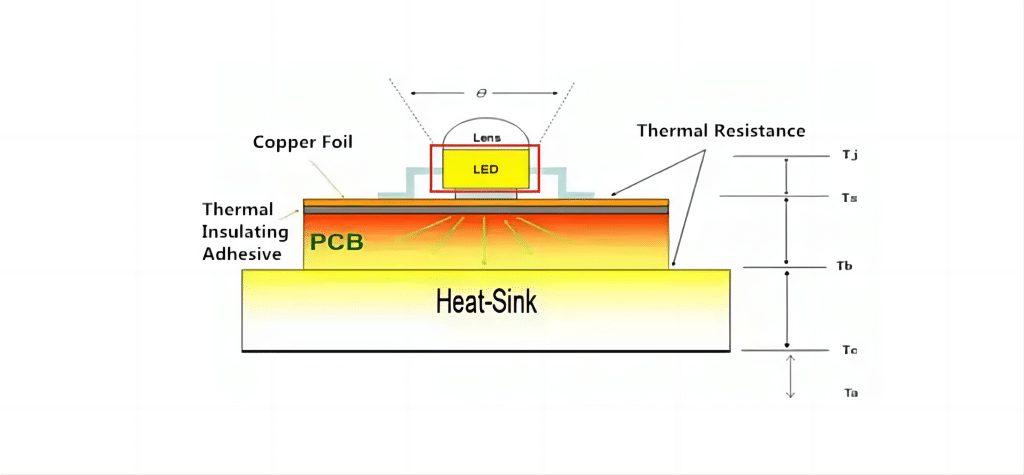
Which ZGSM lamps can be installed with NTC?
All of ZGSM street lamps can be installed with NTC thermistor function. The pictures below are our Rifle series street lamp. From the photos, it is evident that the NTC is securely welded to the PCB, and the connecting wire is inserted into the driver cavity. This configuration enables real-time temperature monitoring and temperature compensation, ensuring the LED's safe operation and stable performance.
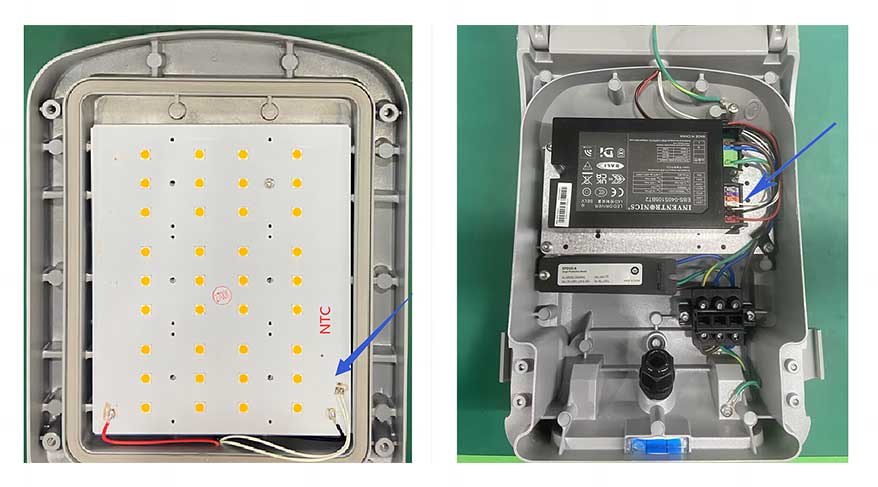
Conclusion:
This article mainly introduces what is NTC and the application of NTC thermistor function in LED lamps. We can see that installing NTC in LED lamps can monitor the temperature in real time and perform temperature compensation to ensure the safe operation and stable performance of the LED. It also acts as a failsafe against a host of problems caused by overheating. Contact us for more information on NTC thermistor function.
FAQ
Related Posts
The Ultimate Guide to Street Lights with 0-10V Dimming
Wide-ranging outdoor applications of LED Floodlights
NTC thermistor function and its application in LED lamps
Guide for canopy light with battery backup
Author

Anna
Sales Engineer
I am Anna Dai, with 18 years of experience in lighting sales. Throughout my career, I have developed a deep understanding of the lighting industry and its products. My expertise lies in building strong relationships with clients, understanding their needs, and providing tailored lighting solutions that align with their requirements.
